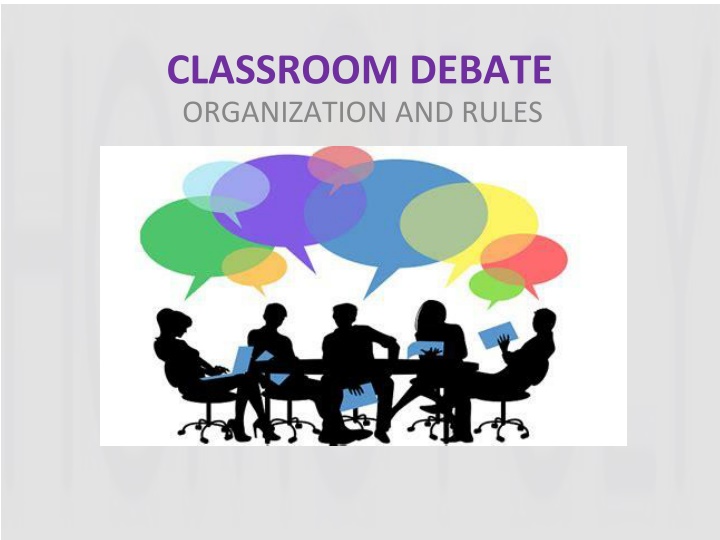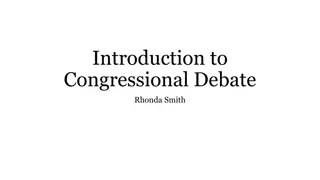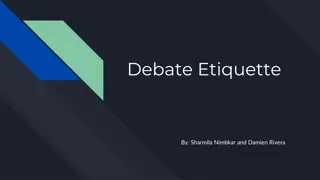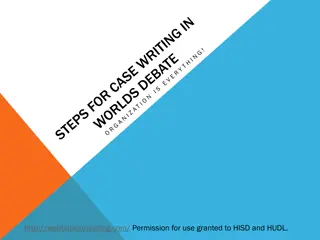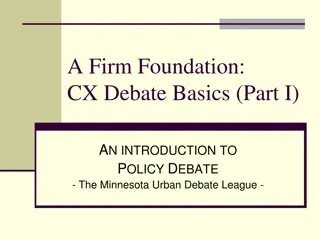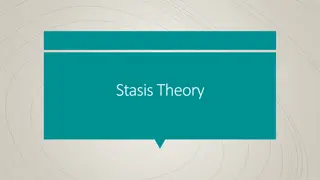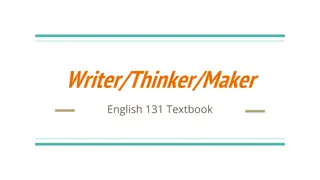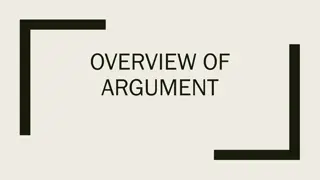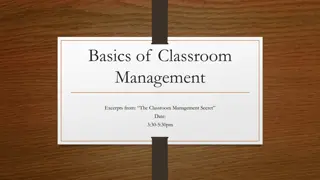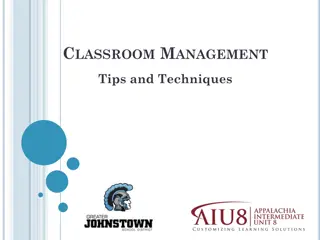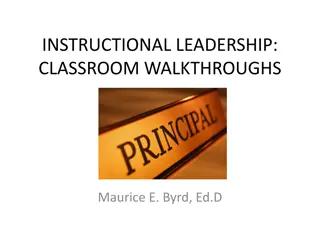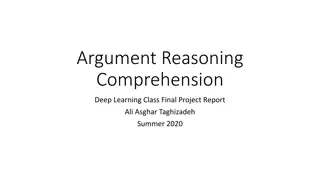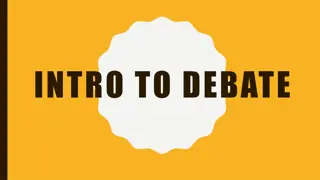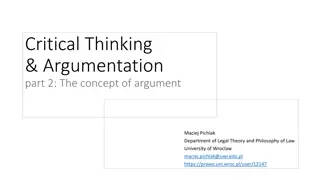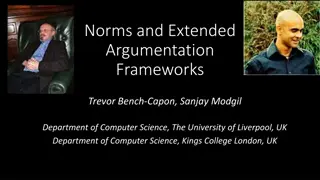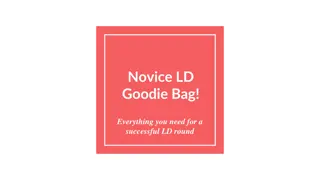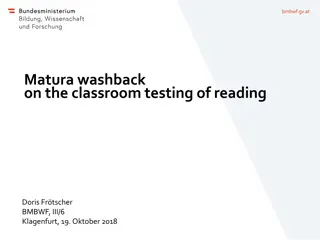Classroom Debate: Learning Through Argumentation
In a classroom debate setup, students engage in structured arguments for and against a topic to enhance communication skills, critical thinking, and respect. The teacher plays a pivotal role in guiding the debate process, while students take on different roles like moderator, team members, observers, and bell-person. The session aims at fostering a healthy exchange of ideas and perspectives, emphasizing learning over competition. General rules ensure active participation and respect among students.
Uploaded on Mar 02, 2025 | 3 Views
Download Presentation

Please find below an Image/Link to download the presentation.
The content on the website is provided AS IS for your information and personal use only. It may not be sold, licensed, or shared on other websites without obtaining consent from the author.If you encounter any issues during the download, it is possible that the publisher has removed the file from their server.
You are allowed to download the files provided on this website for personal or commercial use, subject to the condition that they are used lawfully. All files are the property of their respective owners.
The content on the website is provided AS IS for your information and personal use only. It may not be sold, licensed, or shared on other websites without obtaining consent from the author.
E N D
Presentation Transcript
CLASSROOM DEBATE ORGANIZATION AND RULES
CLASSROOM DEBATE WHAT IS IT? In a classroom debate, students argue for and against a given topic without trying to find a solution. PURPOSE To develop communication skills, analytical thinking and respect for others; To improve students knowledge of a specific topic
TEACHERS ROLE Introduces the activity Distributes different students roles Selects the topic Watches the development of the activity Writes on blackboard main arguments from both teams Summarises the conclusions of the debate
POSSIBLE QUESTIONS You do not choose your sexual orientation; you are born straight or gay. If you identify as LGBT, you should come out to your family and friends. Members of the LGBT community should be allowed to get married. LGBT couples should be allowed to adopt children. LGBT celebrities should come out to champion LGBT rights. Gay men are feminine and gay women are masculine. It s okay to judge someone else s sexuality.
DISTRIBUTING ROLES WHO S WHO? MODERATOR TEAM MEMBERS OBSERVERS BELL-PERSON
TEAM MEMBERS Students are divided into two teams: proposition opposition Approximately 10 students per team Students present their arguments, ask and answer questions, and draw conclusions
MODERATOR Directs the debate: Assigns turns to speak Ensures the rules are respected
BELL-PERSON Makes sure that teams are allocated the same amount of time to speak Rings a bell when time is up
OBSERVERS 2 - 4 students Note the required items on the observation chart Present their conclusions at the end
GENERAL RULES All students should contribute to the debate Students should focus on the topic Students should listen carefully and respect their classmates This is not about winning or losing; it is about learning Students who don t respect these rules are removed from the debate and take place in the audience
TIMING (50) Duration Goal 10 Presentation of the activity & Give topic 5 Questions / Doubts 10 Students prepare arguments in groups 2 x 2 Each team presents arguments 1 x 6 Counter-arguments 5 Reflection & Conclusions in groups 2 x 2 Give final conclusions 4 Observers evaluation 2 Teacher s final conlusion
